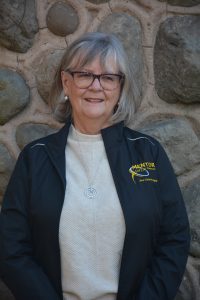– Carola Mittag
Try this simple semi-scientific exercise:
Extend one arm out in front of you.
Hold your index finger straight up.
Close your left eye.
Look at your finger and then focus on one object across the room.
Now close your right eye and open your left one.
Look at your finger and notice how it has moved its position in front of the object across the room.
This is because you have two eyes that observe the world from two different positions. It’s a matter of parallax. (If you do this with a little kid you’ll appear like a magician to them.)
The parallax aspect is useful in comparing points of view and one’s place in a given situation. Parallax arises due to change in viewpoint occurring due to motion of the observer, of the observed, or of both.
Long ago, an ancient Chinese sage expressed parallax this way:
You can’t talk about the ocean with a frog who lives in a well. He is bounded by the space he inhabits.
You can’t talk about ice with an insect who is born and dies in June. He is bounded by a single season.
You can’t talk about the meaning of life with a person who is certain he knows everything there is to know. He is bounded by his own beliefs.
I can understand another person’s point of view even though it differs from mine. Why? Each individual sees something from a different perspective.
I can understand another person’s point of view even though it differs from mine. Why? Each individual sees something from a different perspective.
Last month I wrote about finding a root cause for an incident or accident to prevent a possible recurrence with a potentially tragic outcome. This month I want to focus on the importance of interviewing witnesses to an incident or accident as part of thorough investigations.
Whenever I taught an accident investigation course I went through a very simple exercise with the class. Standing in front of the participants, I let a pencil fall to the floor. Then I asked one person to my right to describe what he/she saw. They may have said that they saw my hip hit the desk which caused the pencil to roll off. Then I asked a person to my left to describe what they saw. They may have said that my hand brushed the pencil causing it to fall to the floor. The person on the other side may not have seen this because my torso blocked their view. The person directly in front of me saw me throw the pencil to the floor. It’s all a matter of perspective.
The whole point of the exercise was to demonstrate that it is important to interview multiple witnesses with varying perspectives and information relevant to the incident.
“the facts ma’am, just the facts”
- Interview witnesses separately, so that their recall is their own and not influenced by another person’s observation which may cause the first person to change their report.
- Each witness saw the incident from a different viewpoint depending on where they were standing when the incident happened. Note – even though the witness report should strictly detail factual observation, individuals may “colour” their report based on personal experiences, knowledge, opinions and attitudes.
- Interviews, to gather testimonial evidence, should be conducted as soon as possible after an incident to ensure accuracy of memory (memories fade over time).
Witnesses may be anyone with information relevant to the incident/accident including:
- People directly involved
- Supervisors
- Others at the workplace
- External people such as material experts
Effective witness interviews require patience to:
- Focus on preventing future accidents (not on blame),
- Ensure everyone involved is aware of the investigation and the need for confidentiality,
- Respect the needs of persons interviewed and preparation.
Written, testimonial witness evidence is generally admissible in court; whereas, oral testimony or hearsay, a statement about what a witness heard someone else say, is not admissible in court.
Witness evidence is critical to establishing a root cause for an incident or accident. It is up to the interviewer to direct the witnesses to stick to “the facts, ma’am, just the facts!”
While parallax may sound like the name of some prehistoric creature, it is in fact a displacement or difference in the apparent position of an object viewed along two different lines of sight. A trained investigative interviewer will want to gather witness evidence from all lines of sight.
While checking the location of my index finger against the twelve on the clock on the far wall, the big hand just jumped an hour. LUNCHTIME!

Watch for next month’s Blog published in the first week of June.
Sincerely,
Carola Mittag
Consultant and Editor for Mentor Safety Consultants Inc.
